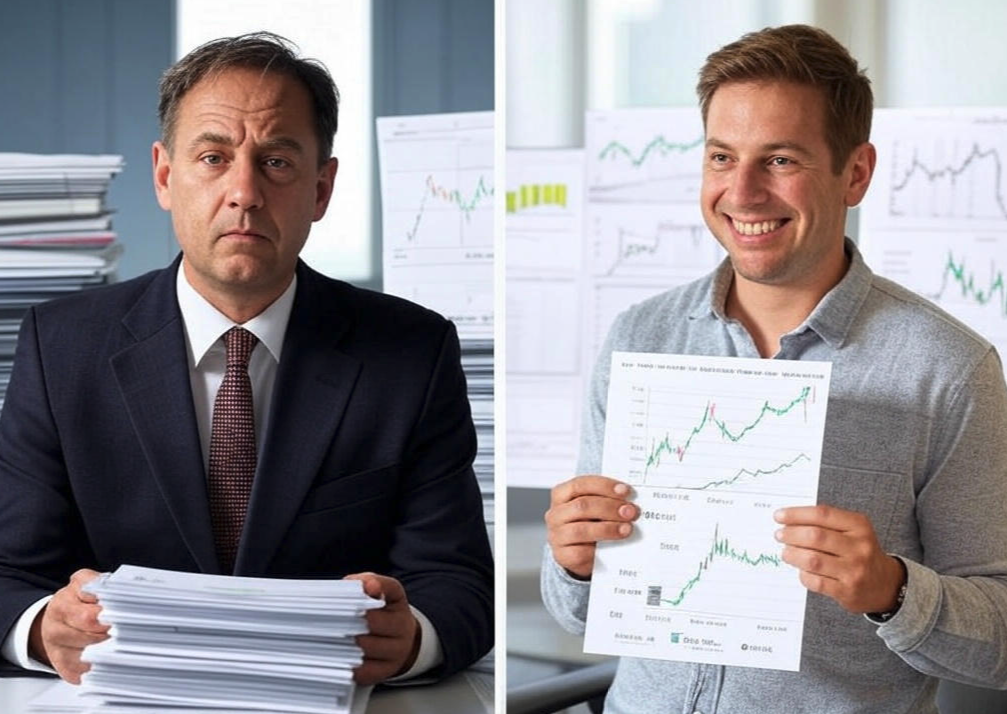How Low-Cost ETFs Can Improve Your Investment Returns

Introduction
When building long-term wealth, every dollar counts—especially the dollars lost to fees. Many investors focus solely on returns, overlooking how expenses silently erode their gains over time. Low-cost ETFs (Exchange-Traded Funds) offer a simple solution: broad market exposure with minimal fees, allowing more of your money to compound.
In this article, we’ll explore:
- How investment costs impact long-term returns
- Why ETFs are structurally cost-efficient
- Real-world comparisons of high-fee vs. low-fee investing
- How to build a diversified portfolio with low-cost ETFs
1. The Hidden Cost of High Fees
Small Fees, Big Consequences
Investment fees might seem trivial—a fraction of a percent annually—but their cumulative effect is staggering. Consider this:
- A 1% annual fee on a 500,000 portfolio costs $5,000 per year.
- Over 30 years, that could reduce your ending balance by 25% or more due to lost compounding.
Example: The Impact of Fees Over Time
Assume a $100,000 investment earning 7% annually before fees:
| Expense Ratio | Value After 30 Years | Total Fees Paid |
|---|---|---|
| 1.0% | $574,000 | $165,000 |
| 0.1% | $761,000 | $16,500 |
Result: The lower-cost portfolio leaves you $187,000 richer—without taking additional risk.
Types of Investment Costs
- Expense ratios (annual fund management fees)
- Trading costs (bid/ask spreads, commissions)
- Tax inefficiency (capital gains distributions)
ETFs typically minimize these costs better than actively managed mutual funds.
2. Why ETFs Are Naturally Cost-Efficient
Structural Advantages of ETFs
- Passive Management
- Most ETFs track market indexes (e.g., broad stock or bond benchmarks), eliminating the need for expensive research teams and frequent trading.
- The average actively managed fund charges 0.60–0.75% annually, while index ETFs often charge under 0.20%.
- Tax Efficiency
- ETFs rarely distribute taxable capital gains, thanks to their unique creation/redemption process.
- Mutual funds, by contrast, often pass along taxable gains to shareholders—even if the investor didn’t sell shares.
- No Hidden Fees
- Many mutual funds charge sales loads (commissions) or 12b-1 fees (marketing costs)—ETFs do not.
3. Real-World Evidence: Low Fees Win
Active Funds vs. Index ETFs
Studies consistently show that low-cost index ETFs outperform the majority of actively managed funds over long periods.
- Over a 15-year period, nearly 90% of active U.S. stock funds underperformed their benchmark index.
- The few active funds that outperform rarely do so consistently.
Why Active Management Struggles
- Higher fees erode returns.
- Market efficiency makes it hard to consistently "outsmart" the market.
- Behavioral biases lead managers to overtrade or chase trends.
4. Building a Low-Cost ETF Portfolio
Core Principles
- Focus on Broad Market Exposure
- Instead of niche ETFs (e.g., sector-specific or thematic funds), prioritize diversified ETFs that cover entire markets (stocks, bonds, or international equities).
- Keep Expense Ratios Below 0.20%
- Many high-quality index ETFs charge 0.03%–0.15%—fractions of the cost of active funds.
- Minimize Trading
- Frequent buying/selling increases costs (spreads, taxes). Stick to a long-term strategy.
Sample Portfolio Allocations
| Risk Level | ETF Strategy | Avg. Expense Ratio |
|---|---|---|
| Aggressive | 80% global stocks + 20% bonds | 0.05–0.15% |
| Moderate | 50% stocks + 10% international + 40% bonds | 0.07–0.20% |
| Conservative | 70% bonds + 20% stocks + 10% dividends | 0.10–0.25% |
5. Common ETF Pitfalls to Avoid
❌ Chasing High-Fee "Trendy" ETFs (e.g., leveraged, crypto, or thematic funds)
❌ Overcomplicating with Too Many ETFs (Redundant holdings increase costs)
❌ Ignoring Liquidity (Stick to ETFs with high trading volume to minimize spreads)
6. Beyond Fees: Additional ETF Benefits
Liquidity & Flexibility
- ETFs trade like stocks (intraday pricing vs. mutual funds’ end-of-day settlements).
- Useful for tax-loss harvesting or rebalancing.
Transparency
- Most ETFs disclose holdings daily (vs. quarterly for many mutual funds).
Accessibility
- Available in most brokerage accounts with no minimum investments.
Conclusion: Keep Costs Low, Keep More Returns
Lowering investment fees is one of the few controllable factors in wealth-building. By choosing low-cost ETFs, you:
✔ Reduce drag on returns
✔ Improve tax efficiency
✔ Simplify portfolio management
Next Steps
- Review your current funds’ expense ratios (Check prospectuses or brokerage statements).
- Replace high-cost holdings with comparable low-cost ETFs.
- Reinvest the savings—let compounding work in your favor.
Need help optimizing your portfolio’s costs? Consult a fiduciary advisor to align your investments with your goals.
Disclosures
This article is for informational purposes only. Investment returns and risks vary; past performance does not guarantee future results. Lower fees do not eliminate market risk. Consult a financial or tax advisor before making investment decisions.